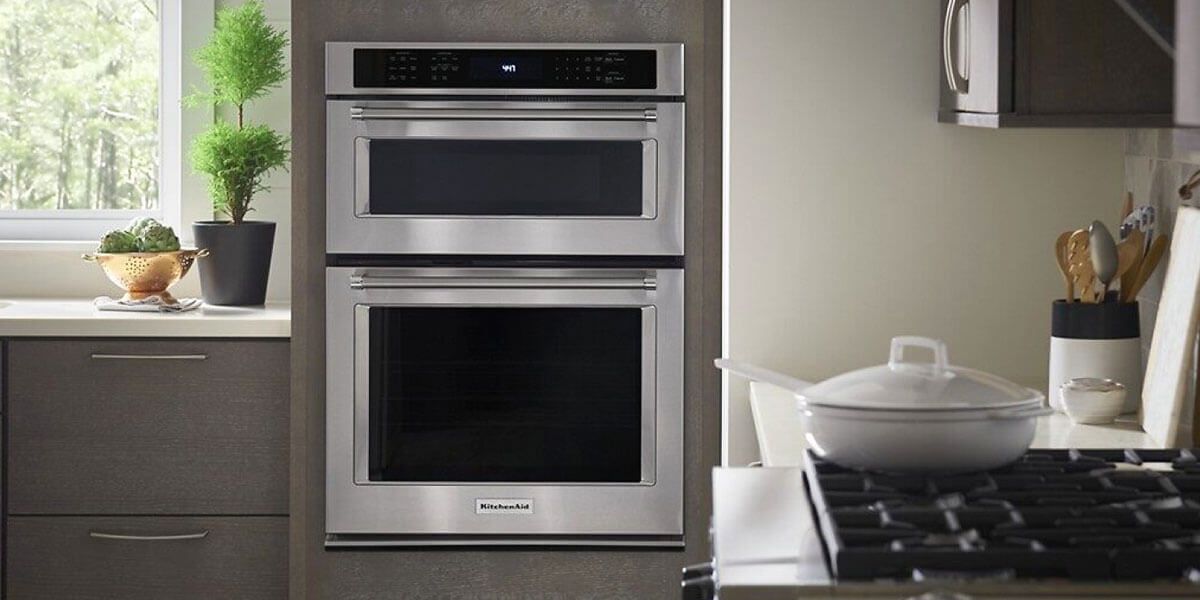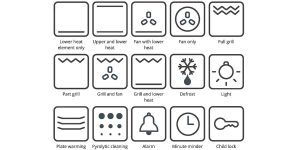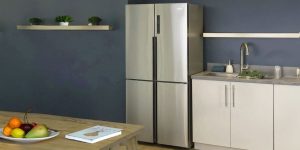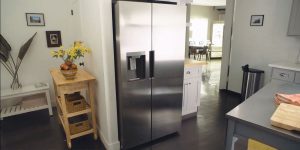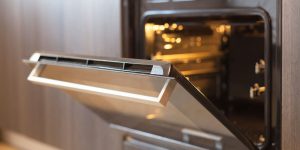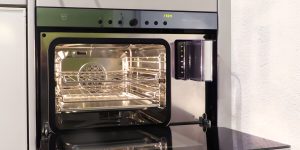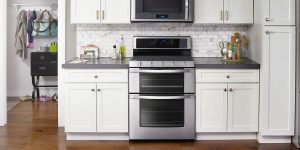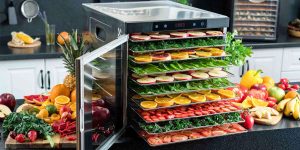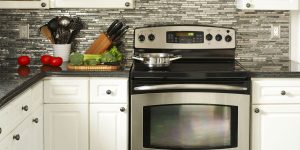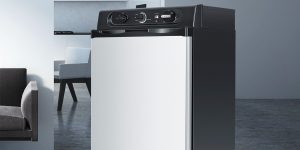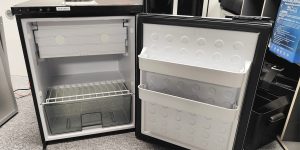When designing or renovating a kitchen, one of the most pivotal decisions is the “wall oven vs range” dilemma. Each option boasts its own set of merits and drawbacks, and the final choice often hinges on personal preferences, culinary habits, and budget constraints.
This article will delve deep into the key differences between the two to help inform your decision and knowledge of how to install a cooktop and wall oven.
Critical differences between wall and range ovens
| Feature | Wall Oven | Range Oven |
|---|---|---|
| Oven Volume | Can be single or double, allowing for flexibility in cooking multiple dishes simultaneously. | Typically has one oven, though some high-end models may offer double ovens. |
| Space Efficiency | Requires a separate cooktop, which can take up additional space. | More compact for smaller kitchens since it combines both a cooktop and oven. |
| Design and Appearance | Sleek and seamless when mounted into the wall, offering a more modern look. | Has a wider design range and can give a kitchen a more traditional or classic appearance. |
| Installation | Can be more complex and might require professional installation due to electrical and plumbing requirements. | Easier to install as it integrates both the cooktop and oven. |
| Cleaning and Maintenance | Easier to access and clean, especially beneficial for those with mobility challenges. | Might require more effort to clean both the cooktop and oven components in one unit. |
| Cost | Generally pricier since a separate cooktop is needed. | Combines cooktop and oven in one unit, making it more budget-friendly. |
Ultimately, the choice between a wall oven and a range oven hinges on factors such as budget, kitchen space, culinary preferences, and desired aesthetics. Wall ovens, often paired with a separate cooktop in a cooktop and wall oven setup, shine with their flexibility, sleek design, and capability to cook multiple dishes simultaneously. However, it’s worth noting that wall ovens are more expensive than ranges in many cases. On the other hand, range ovens stand out for their affordability, compactness, and ease of installation. I’d claim that whatever your needs are, both options offer unique advantages that cater to diverse kitchen scenarios.
Key features of wall and range oven
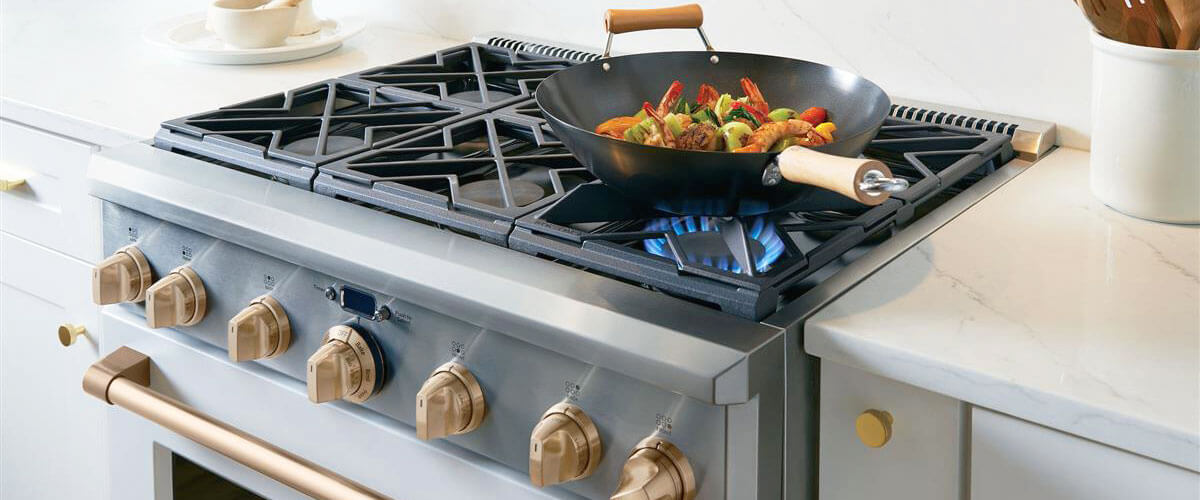
When crafting the ideal kitchen, understanding the specifics of your primary cooking appliances, including options like the oven cooktop combo, can greatly influence your decision-making process. Let me dissect the features of wall ovens and range ovens in detail.
Wall oven:
- Installation position: Wall ovens are typically cabinet mounted directly into the wall, typically at eye level, making it easier to access and monitor food without bending over.
- Variety in design: They can come as single or double ovens. This dual design allows for simultaneous baking at different temperatures. Additionally, wall ovens offer greater flexibility in terms of placement and aesthetics, ensuring a more tailored fit for your kitchen design.
- Cooking proficiency: Especially suited for baking and roasting, wall ovens ensure even heat distribution, producing perfect pies, roasts, and more.
- Cost consideration: Generally, they tend to be pricier than traditional ranges. The need for a separate cooktop can further increase the overall expenditure.
- Accessibility: One of the standout features of wall ovens is their ease of access. For those with mobility issues or those who prefer not to bend frequently, wall ovens present a convenient solution.
Range oven:
- Integrated design: Ranges are the all-in-one solution, combining a cooktop and oven in a singular unit, ensuring that all cooking tasks are centralized.
- Diverse options: Available in a multitude of sizes and styles, there’s a range to fit almost every kitchen aesthetic and space.
- Budget-friendly: Ranges are generally more affordable than wall ovens, making them a popular choice for many households.
- Space-efficient: Particularly suited for smaller kitchens, their compact design ensures space is maximized without compromising on functionality.
- Everyday cooking: Ideal for daily meal preparations and simpler recipes, ranges offer a practical solution for most cooking needs.
- Oven space: One limitation to consider is the potential for restricted oven space, especially in comparison to the expansive capacity some wall ovens offer.
In essence, both appliances bring their unique set of advantages. Your choice will likely pivot on kitchen dimensions, budget constraints, design preferences, specific cooking requirements, and the allure of configurations, such as a gas cooktop with an electric oven below.
Size and appearance of range and wall ovens
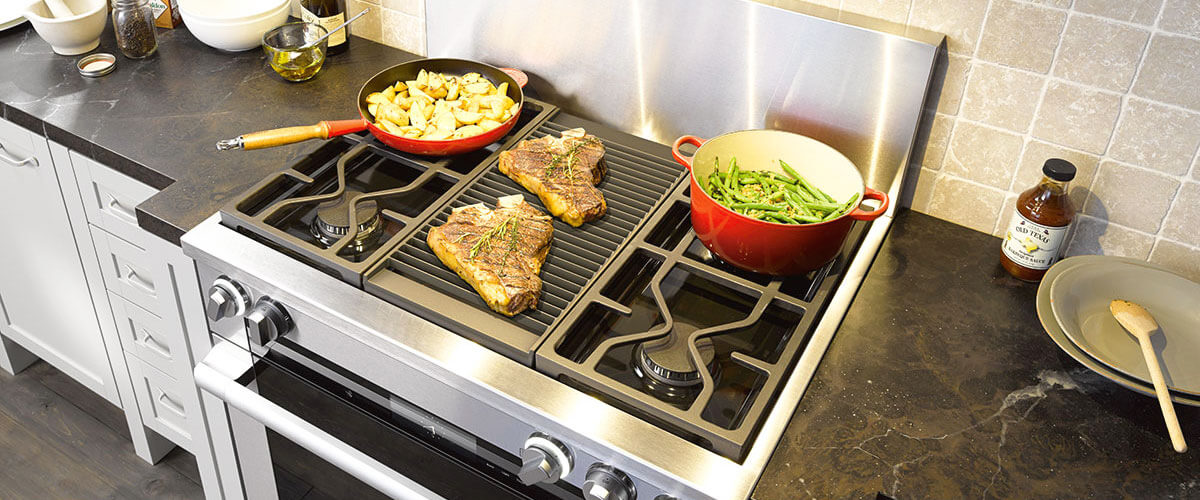
When designing or renovating a kitchen, the size and appearance of cooking appliances play a pivotal role. Let’s delve deeper into the dimensions and aesthetic attributes of wall and range ovens.
Wall oven:
- Appearance: The wall-mount oven offers a sleek and integrated appearance. This seamless integration can enhance a modern and flat interior design, making it attractive for those with contemporary taste.
- Flexibility: Available as single or double ovens. While this allows the simultaneous cooking of multiple dishes, it does demand more space. However, it grants tremendous placement flexibility: whether in a wall, cabinetry or below a countertop.
- Typical sizes.
- Widths: 24″, 27″, or 30″. A 30-inch wall oven is most common, closely followed by the 27-inch variant. Some brands now also feature 36-inch models.
- Depth: Usually between 22″ to 24″.
- Height: Remains consistent, approximately between 22″ to 24″, irrespective of width.
- Note: Ensure you check the manufacturer’s recommended cut-out dimensions before purchase.
Range oven:
- Appearance: A range combines both a cooktop and oven, presenting a unified look. This configuration may be more visually appealing to those leaning toward a traditional or classic kitchen style. Yet, remember that ranges can sometimes offer limited oven space.
- Typical sizes.
- Width: A freestanding range usually spans a width of 30 inches, a standard for most ranges.
- Depth: Typically falls between 25″ to 28″, excluding the oven handle.
- Height: From the floor to the burners, it’s usually about 36 inches, closely aligning with standard counter height.
Installation, cleaning, and maintenance of wall and range ovens
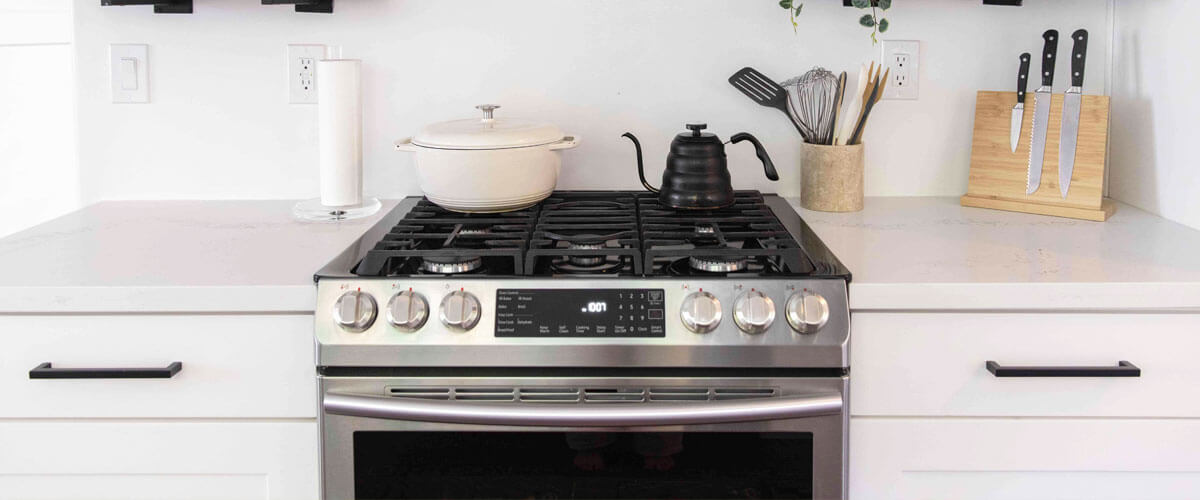
Ensuring the longevity and optimum functionality of ovens revolves around their installation, cleaning, and regular maintenance. Here’s a comparative look between wall and range ovens in these aspects:
Wall oven:
- Installation.
Requires a separate cooktop.
Specific electrical and plumbing requirements might be needed.
Possible modifications to cabinetry and walls can increase costs and complexity. - Cleaning.
Easier access and cleaning for individuals with physical limitations due to eye-level positioning.
May need frequent cleaning as separate cooktops can accumulate grease and splatters. - Maintenance.
Periodic checks on electrical connections and the oven’s sealing mechanism.
Depending on the model, self-cleaning options might be available.
Range oven:
- Installation.
All cooking functions are in one place, which might simplify installation. Still might require professional installation due to electrical and gas requirements. - Cleaning.
The unified design makes general cleaning easier.
Spills and grease can accumulate in both the oven and cooktop areas, demanding meticulous cleaning.
Regular maintenance of burners or electric coils is necessary for even cooking. - Maintenance.
Periodic checks on gas or electrical connections.
Ensure the oven door seals correctly to prevent heat loss.
Self-cleaning options might be available depending on the model.
FAQ
Why are wall ovens more expensive?
Wall ovens often carry a heftier price tag compared to their freestanding counterparts for several reasons:
- Design: Such models are designed to seamlessly integrate into kitchen cabinetry, providing a sophisticated and contemporary look. This demands high-quality materials and a meticulous design approach.
- Versatility and additional options: Many wall ovens come with enhanced features, like convection cooking, that might not always be present in standard ranges.
Does a wall oven need a vent?
Yes, wall ovens do need venting. It’s important to allow the heat and moisture to escape during cooking, preventing potential damage to the oven and ensuring efficient operation. Some wall ovens have built-in vents located either at the top or bottom, while others might be connected to external ventilation systems.
Are wall ovens practical?
Wall ovens offer several practical advantages:
- Ergonomics: Positioned at eye level, they make it easier to insert or remove dishes without bending.
- Space-saving: They free up the under-counter space, which can be used for storage or other appliances.
- Design flexibility: Being separate from the cooktop, homeowners can place them at any desired location in the kitchen, allowing for a separate oven and cooktop setup.
What is the difference between a range and a cooktop?
A range combines both an oven and a cooktop into a single appliance. It’s a freestanding unit and is typically easier and cheaper to install. Ranges are ideal for kitchens with limited space or for those who prefer an all-in-one cooking solution.
Cooktop: In turn, it is just the top cooking surface, offering burners or heating elements for stovetop cooking. It’s installed directly into the countertop and requires a separate wall or under-counter oven installation.
